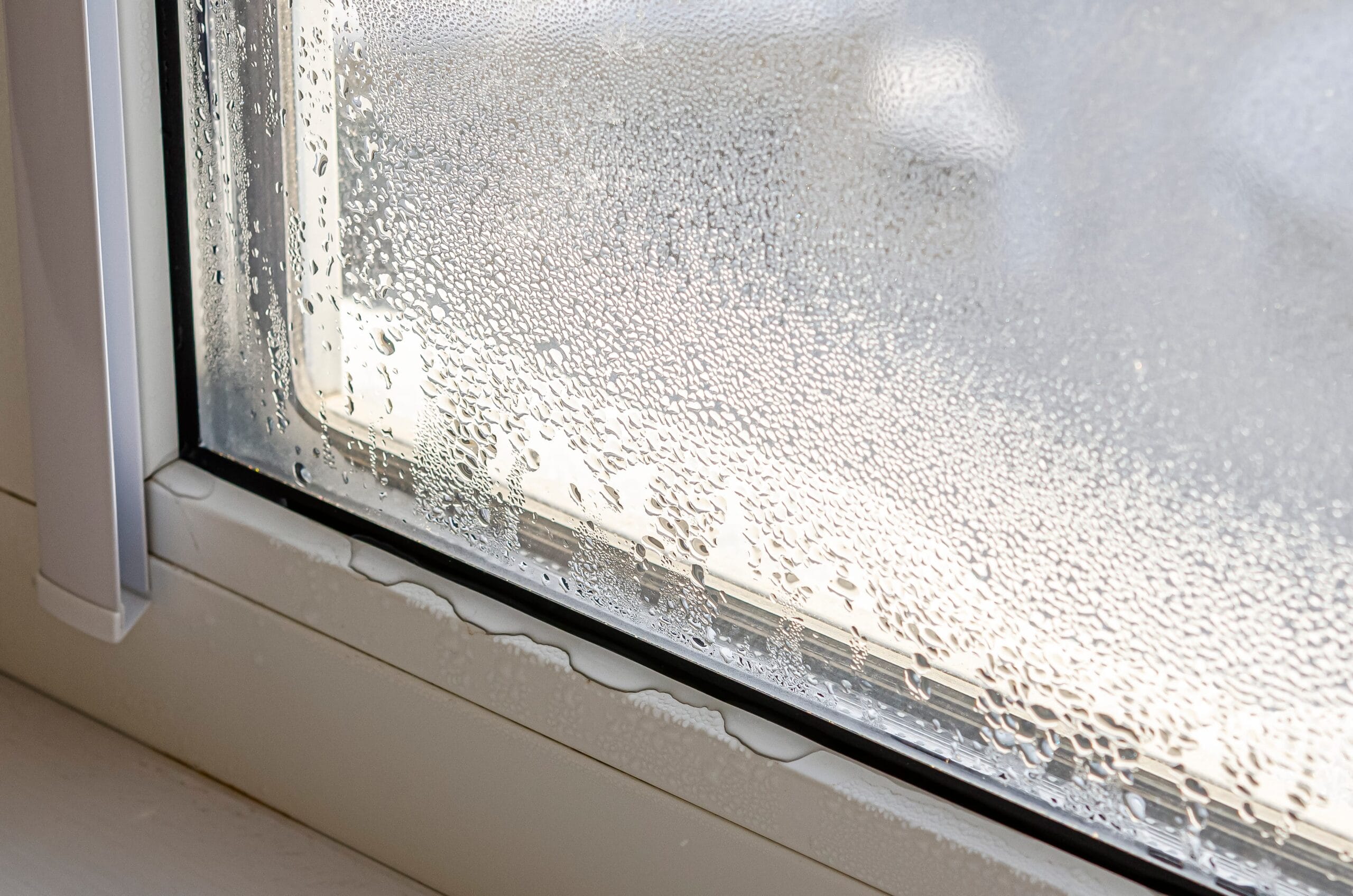Frost on windows is a familiar sight in winter, but it can also be a red flag when it comes to your home’s insulation and energy efficiency. While it may seem like just a cosmetic inconvenience, persistent frost is often a signal of poor window performance, heat loss, or excessive indoor humidity.
In this guide, you’ll discover what causes frost to form on windows, how it affects your comfort and energy bills, and what practical steps you can take to eliminate the issue.
Why Frost Forms on Windows
Frost appears when warm, moist indoor air comes into contact with a windowpane that is cold enough to drop below the dew point. At this temperature, moisture in the air condenses on the glass. If it gets even colder, this condensation freezes into frost.
This is most likely to happen in winter when there’s a sharp contrast between the warm indoor air and freezing exterior conditions. The problem becomes worse with poor insulation, old windows, or high humidity inside the home. Frost often points to larger issues such as inadequate airflow, thermal bridging, or failing weather seals.
Condensation and Frost: Two Sides of the Same Coin
Frost is simply condensation that has frozen. The first sign of trouble is usually fog or droplets on the window, which later crystallize into frost as temperatures fall. If your windows fog up often, especially at night or in the early morning, you’re likely at risk of frost accumulation.
Reducing condensation is therefore key to preventing frost. Addressing indoor humidity, improving ventilation, and maintaining a consistent temperature across interior surfaces will reduce both.
What Frost Tells You About Energy Loss
Frost on windows is more than a visual issue. It often highlights where your home is losing energy. When warm air reaches the window, it cools down and condenses. This means insulation or sealing is insufficient, allowing interior heat to escape.
Although frost does have some insulating qualities, its presence indicates that valuable heat is being transferred toward the window. That heat loss forces your heating system to work harder, raising energy consumption and increasing your monthly utility bills.
Short-Term Solutions for Frost Removal
If frost has already formed on your windows, you can remove it with care to avoid damaging the glass.
Use a hair dryer: Direct warm air across the window surface, keeping the airflow moving to avoid overheating one spot.
Apply warm water: Use a sponge or cloth soaked in warm (not hot) water. Gently melt and wipe away the frost. Never pour hot water directly on a frozen window, as the sudden temperature change can cause the glass to crack.
While these methods are helpful for temporary relief, they don’t solve the underlying issue. For that, long-term strategies are needed.
Practical Steps to Prevent Frost
Preventing frost starts with reducing condensation and improving thermal insulation. Here are some effective strategies:
Install Insulating Window Film
An insulating film creates a buffer between warm indoor air and the cold glass surface. This simple product significantly reduces condensation and helps retain indoor heat, especially on older windows or those with minimal glazing.
Leave Curtains Open at Night
It might seem counterintuitive, but leaving curtains open overnight allows indoor heat to circulate over the window surface. This prevents cold air from getting trapped between the curtain and the glass, which often causes condensation and frost buildup.
Improve Window Insulation
Investing in better-insulated windows is one of the most effective long-term solutions.
-
Double or triple glazing: Modern insulated windows help maintain a higher surface temperature, making it harder for frost to form. They also provide improved acoustic insulation and enhance overall comfort.
-
Replace older windows: If your windows are outdated or showing signs of wear, consider replacing them with energy-efficient models. This will reduce both condensation and heat loss.
-
Maintain seals and frames: Check weatherstripping and window frames regularly. Cracked or deteriorated seals can allow cold air to enter, undermining your efforts to manage humidity and temperature.
Reduce Indoor Humidity to Keep Windows Dry
Moisture in the air is the root cause of condensation and frost. Managing it effectively will help prevent both.
-
Ventilate your home daily: Opening windows for just a few minutes each day, even in winter, allows excess moisture to escape and fresh air to circulate.
-
Use a dehumidifier: In high-humidity areas like bathrooms, kitchens, or basements, a dehumidifier can make a big difference. It lowers moisture levels, helping keep your windows dry.
-
Limit indoor moisture sources: Use exhaust fans when cooking or showering, cover pots when boiling water, and avoid drying laundry indoors without proper ventilation.
Ensure Proper Window Installation
Even high-performance windows won’t perform well if installed incorrectly. Proper installation is critical to avoid air leakage, thermal bridging, and water infiltration, all of which can contribute to condensation and frost.
Make sure your windows are:
-
Level and square in the frame
-
Properly sealed at all joints and edges
-
Installed by certified professionals
Fenomax ensures all installations meet the highest industry standards, helping you get the most from your investment.
In Summary
Frost on windows isn’t just a seasonal annoyance. It’s a warning sign that your home may be losing heat or retaining too much humidity. Tackling the root causes (whether through better insulation, proper ventilation, or upgraded windows) will not only eliminate frost but also improve energy efficiency and indoor comfort.
Key Takeaways
-
Frost forms when indoor humidity condenses and freezes on cold window surfaces
-
It indicates energy loss and inadequate insulation
-
De-icing is a short-term fix; long-term solutions involve improving ventilation and upgrading windows
-
Managing indoor humidity is essential to reducing condensation and frost
-
Proper window installation and sealing are critical for performance
-
Fenomax offers durable, energy-efficient window solutions designed for harsh Canadian winters
